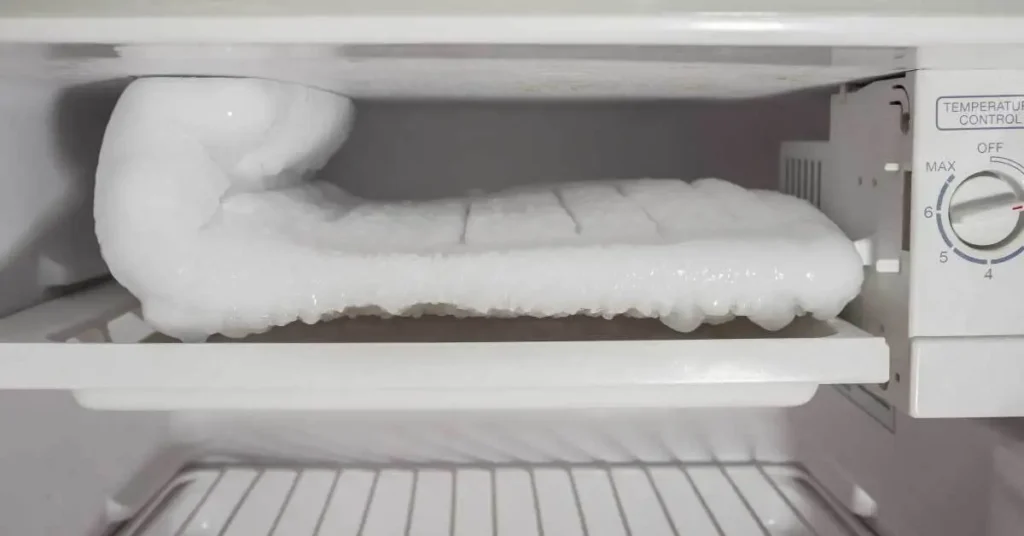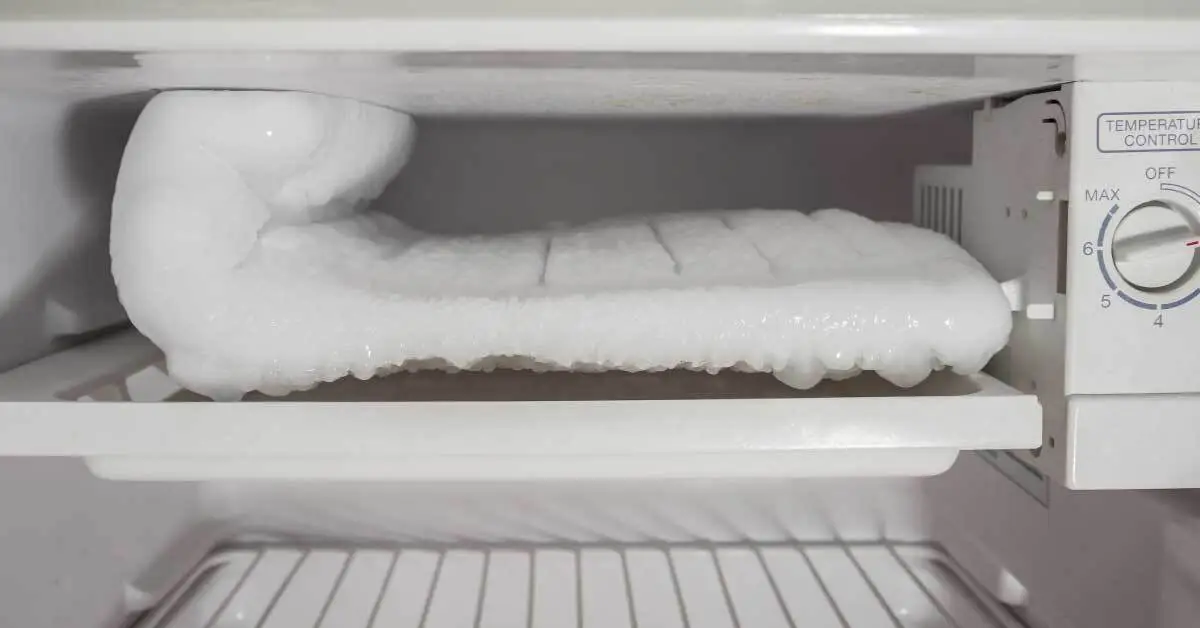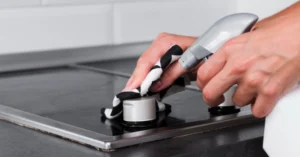
Excessive frost in your freezer can be a frustrating problem, turning your appliance into an icy fortress and reducing its efficiency. Not only does frost build-up make it harder to access your frozen goods, but it can also lead to higher energy bills and potential damage to your freezer. In this comprehensive guide, we’ll explore the causes of freezer frost, provide step-by-step solutions to remove it, and share proactive tips to prevent it from returning. Whether you’re dealing with a frosty freezer or looking to maintain a frost-free appliance, this 2000+ word guide has you covered with practical advice, expert insights, and answers to common questions.
What Causes Excessive Frost in Your Freezer?
Understanding why your freezer is icing up is the first step to fixing the problem. Frost occurs when warm, moist air enters the freezer and condenses, forming ice on surfaces. Here are the most common culprits:
1. Frequent Door Openings
Every time you open the freezer door, warm air rushes in, carrying moisture that freezes upon contact with the cold interior. This is especially common in busy households or during hot, humid weather.
2. Faulty Door Seals
A worn or damaged door gasket allows warm air to seep into the freezer, leading to frost build-up. Check the seal by closing the door on a piece of paper; if you can pull it out easily, the gasket may need replacement.
3. Improper Food Storage
Uncovered or poorly packaged food releases moisture as it freezes, contributing to frost. Using airtight containers or freezer-safe bags can significantly reduce this issue.
4. Clogged Defrost Drain
Many modern freezers have a defrost drain that removes excess water during the defrost cycle. If this drain is clogged with debris or ice, water can accumulate and refreeze, causing frost.
5. Thermostat or Compressor Issues
If your freezer is set too cold or the compressor is malfunctioning, it can cause excessive cooling, leading to ice build-up, especially on the suction line or evaporator coils.
6. High Humidity Levels
In humid climates, the air entering the freezer contains more moisture, accelerating frost formation. A dehumidifier in the kitchen can help mitigate this.
How to Fix Excessive Frost in Your Freezer: Step-by-Step Guide
Removing frost from your freezer requires a systematic approach to ensure safety and efficiency. Follow these steps to defrost your freezer and restore its performance.
Step 1: Prepare for Defrosting
- Unplug the Freezer: For safety, disconnect the freezer from the power source to avoid electrical hazards.
- Remove Contents: Transfer all food to a cooler with ice packs to keep it frozen. Avoid letting food thaw, as this can affect quality and safety.
- Gather Supplies: You’ll need towels, a shallow pan, a plastic scraper, and warm water. Avoid sharp tools like knives to prevent damaging the freezer’s interior.
Step 2: Speed Up the Defrosting Process
- Natural Defrosting: Leave the freezer door open to allow warm air to melt the ice naturally. Place towels on the floor to catch dripping water.
- Hot Water Method: Place a bowl of hot (not boiling) water inside the freezer and close the door for 10–15 minutes to accelerate melting. Refresh the water as needed.
- Fan Assistance: Position a fan to blow room-temperature air into the freezer, speeding up the melting process without risking damage to components.
- Avoid Harsh Methods: Refrain from using hairdryers or heat guns, as they can damage the freezer’s interior or create unsafe conditions.
Step 3: Remove Ice Safely
- Use a plastic scraper to gently remove softened ice. Work carefully to avoid scratching the freezer’s walls or damaging the evaporator coils.
- Collect melted water in a shallow pan and empty it regularly to prevent spills.
Step 4: Clean and Dry the Freezer
- Wipe down the interior with a mixture of warm water and mild dish soap to remove any residue or odors.
- Dry thoroughly with a clean towel to prevent new frost from forming immediately.
- Check the defrost drain (usually located at the back or bottom of the freezer) and clear any blockages using a pipe cleaner or warm water.
Step 5: Restore and Test
- Plug the freezer back in and allow it to cool to the recommended temperature (0°F or -18°C) before restocking.
- Ensure the door seal is clean and intact to prevent future frost issues.
How to Prevent Frost Build-Up in Your Freezer
Once you’ve tackled the frost, take these proactive steps to keep your freezer frost-free and running efficiently.
1. Check and Maintain Door Seals
- Inspect the gasket regularly for cracks, tears, or debris. Clean it with warm soapy water and apply a thin layer of petroleum jelly to keep it pliable.
- Replace damaged seals promptly to ensure an airtight closure. A professional freezer repair service can assist with gasket replacement for a perfect fit.
2. Optimize Food Storage
- Use airtight, freezer-safe containers or bags to minimize moisture release. Vacuum-sealed bags are particularly effective.
- Avoid overpacking the freezer, as this restricts airflow and can lead to uneven cooling and frost formation.
3. Control Freezer Temperature
- Set your freezer to 0°F (-18°C), the ideal temperature for food preservation without excessive cooling. Use a freezer thermometer to monitor accuracy.
- If the freezer is too cold, adjust the thermostat to avoid ice build-up on the compressor or suction line.
4. Minimize Door Openings
- Plan ahead to reduce how often and how long the freezer door is open. Group tasks like meal prep to limit warm air exposure.
- In humid climates, consider running a dehumidifier near the freezer to reduce ambient moisture.
5. Regular Maintenance
- Clean the defrost drain every few months to prevent clogs. Pour a mixture of warm water and vinegar through the drain to clear debris.
- Dust the condenser coils (located at the back or bottom of the freezer) to ensure efficient cooling and prevent overworking the compressor.
6. Invest in a Frost-Free Freezer
- If frost issues persist, consider upgrading to a frost-free model. These freezers have built-in defrost cycles that prevent ice build-up, though they still require occasional maintenance.
When to Call a Professional for Freezer Frost Issues
While many frost problems can be resolved with DIY methods, some issues require expert intervention. Contact a freezer repair service if you notice:
- Persistent Frost Despite Maintenance: If frost returns quickly after defrosting, there may be an underlying issue with the defrost system, thermostat, or compressor.
- Icing on the Compressor or Suction Line: This could indicate a refrigerant issue or a malfunctioning component, which requires professional diagnosis.
- Unusual Noises or Poor Cooling: A failing compressor or blocked vents can cause frost and affect the freezer’s performance.
- Damaged Components: Replacing gaskets, evaporator coils, or defrost drains often requires specialized tools and expertise.
A professional technician can diagnose complex issues, ensure proper repairs, and extend the life of your freezer. Schedule a service with our expert freezer repair team for reliable solutions tailored to your appliance.
Additional Tips for Freezer Maintenance
1. Monitor Freezer Performance
- Listen for unusual noises, such as clicking or humming, which could indicate compressor or fan issues.
- Check for consistent cooling. If some areas are warmer than others, vents may be blocked, or the evaporator fan may need repair.
2. Organize for Efficiency
- Use baskets or dividers to keep items organized, reducing the time the door is open.
- Label food containers to quickly find what you need, minimizing warm air exposure.
3. Schedule Regular Check-Ups
- Annual maintenance by a professional can catch issues like worn gaskets or clogged drains before they cause frost build-up. Book a freezer repair service for peace of mind.
Why Frost-Free Matters for Your Freezer
A frost-free freezer not only saves you time and effort but also ensures your appliance runs efficiently, preserving food quality and reducing energy costs. By addressing frost build-up promptly and adopting preventive measures, you can extend the life of your freezer and avoid costly repairs. However, if frost persists or you suspect a deeper issue, don’t hesitate to seek professional help. Our freezer repair services are designed to diagnose and resolve even the most stubborn freezer problems, keeping your appliance in top shape.
Conclusion
Excessive frost in your freezer is a common issue, but it’s manageable with the right knowledge and tools. By understanding the causes, following our step-by-step defrosting guide, and implementing preventive measures, you can keep your freezer frost-free and efficient. Regular maintenance, proper food storage, and timely professional intervention are key to a long-lasting, high-performing freezer. For complex issues or persistent frost, trust our expert freezer repair services to restore your appliance to peak condition.
By taking action today, you’ll save time, money, and frustration while ensuring your frozen goods stay fresh and accessible. Have a frost-related question or need professional assistance? Contact us now for tailored solutions!
FAQs About Freezer Frost Build-Up
1. What causes excessive ice build-up in a freezer?
Excessive ice is typically caused by warm, moist air entering the freezer due to frequent door openings, faulty gaskets, or high humidity. Clogged defrost drains or thermostat issues can also contribute.
2. How do I defrost a freezer quickly?
Place a bowl of hot water inside the freezer or use a fan to circulate room-temperature air. Avoid using heat guns or sharp tools, as they can damage the appliance.
3. Can frost damage a freezer?
Yes, excessive frost can strain the compressor, reduce efficiency, and lead to higher energy bills. Prolonged frost build-up may also damage food quality and cause leaks.
4. How do I prevent food from getting frost on it?
Store food in airtight, freezer-safe containers or vacuum-sealed bags to minimize moisture exposure. Avoid overpacking to ensure proper airflow.
5. What is the ideal freezer temperature?
The recommended temperature is 0°F (-18°C). Use a thermometer to verify, as settings like “1-7” vary by model. Check your manual for specific guidance.
6. Can I defrost a freezer without turning it off?
It’s possible to remove small amounts of frost with a plastic scraper while the freezer is running, but for thorough defrosting, unplugging is safer and more effective.
7. How do I unblock a defrost drain?
Locate the drain (usually at the back or bottom) and flush it with warm water and vinegar using a turkey baster or pipe cleaner to clear debris.
8. Why is my freezer compressor icing up?
Compressor icing can result from a faulty defrost system, low refrigerant levels, or a malfunctioning thermostat. A professional should diagnose and fix this issue.
9. Is freezer frost unhealthy?
Frost itself isn’t harmful, but it can affect food quality by causing freezer burn. Excessive frost may also indicate underlying issues that could lead to food spoilage.
10. How can a freezer be frost-free?
Frost-free freezers use automatic defrost cycles to melt ice and drain water. Regular maintenance, like cleaning the drain and coils, ensures they stay frost-free.






